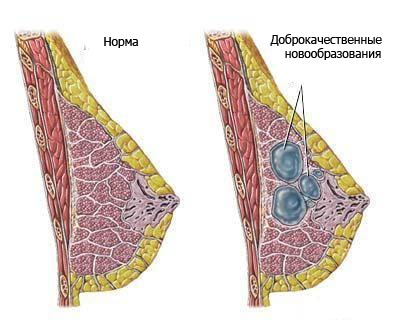

All breast diseases can be divided into 2 large groups.
The first group is inflammatory diseases (mastitis), they are possible during lactation (when a woman is breastfeeding).
The second group of diseases is called the terms: “fibrocystic mastopathy”, “mastopathy” or “dishormonal hyperplasia”.
When assessing pain in chest and in conjunction with the above, it is important to consider the person's joint pain, which may exhibit additional aggravation when it occurs. Chest pain at age 20 is not the same as at age 65. Thus, there are a number of factors called "risk" that, if present, when a person suffers from chest pain, let's assume its name indicates, Added risk in the assessment this pain. These factors include high blood pressure, high cholesterol, diabetes, smoking, as well as excess obesity and a sedentary lifestyle.
In this article I will tell you about the causes and signs of the second group of diseases - mastopathy.
And I will tell you in detail what to do if mastopathy is detected.
Mastopathy is benign breast disease (breast cancer).
According to the latest data, approximately 75-80% of women aged 20-45 years have breast diseases, which are collectively called “mastopathy”. (N.I. Rozhkova 1993).
Of all, diabetes is the most worrying. Not just because of the damage it causes to our arteries, but because in people with diabetes, the symptoms of chest pain caused by insufficient cardiac irrigation may be masked or present as fatigue rather than pain.
On the other hand, there are factors that have been shown to be effective in reducing the risk of chest pain that may be associated with cardiovascular disease. To be a woman before the menopause stage, having one of the cholesterol fractions in high values and, above all, regular practice of physical exercise. These factors cause the incidence of these diseases to be lower in people who have one of these three variables. It is worth mentioning even briefly that for an exercise to be beneficial, the frequency with which it is practiced is more important than high intensity.
The relevance of this topic is due to the high prevalence of this condition and the fact that in women with mastopathy the risk of developing breast cancer increases by 3-5 times.
 The most common symptom of breast disease is pain, most pronounced a few days before menstruation. As a rule, pain decreases after the start of menstruation.
The most common symptom of breast disease is pain, most pronounced a few days before menstruation. As a rule, pain decreases after the start of menstruation.
Extreme exhaustion should never be sought, but "moving" always has a feeling of "comfort" and gives the impression that at any moment of one's practice there is maintained a reasonable reserve that separates us from the limit and that it intends to practice the sport safer. Naturally, we are talking here about a sport that we can practice as amateurs, since high-level athletes have their own doctors and coaches who advise them in their preparation and training.
If it is a pain that persists for more than 1-2 minutes, it extends to almost the entire central region of the chest, it occurs in patients with hypertension and diabetes, aged 65 years, fairly sedentary and where there is excess body weight In 15% of cases, when it was considered appropriate, we could say, in contrast to the previous example, that the type of pain occurs in a person with a risk profile that is very much taken into account in the assessment of his pain, and even if he has not presented any other sign associated with episodes of pain, we recommend that you consult your doctor as soon as possible, even if the pain occurs on an isolated occasion.
A woman may find areas of compaction on the breast that are painful when touched.
Under your hand, they feel like cords, balls, bunches of grapes or many small nodules - cysts.
There may be discharge from the breast nipple - serous, similar to colostrum or even greenish.
Mastopathy is divided into diffuse and nodular forms.
These two situations, without being extreme, attempt to show that pain is a symptom, and that in assessing any symptom, and especially if we are talking about chest pain, other than the pain itself, the context in which it is presented and the circumstances of each patient are fundamental to assess the severity and consequences that such pain may present.
However, if you continue with any uncertainty that worries you about your occasional chest pain, or if you need further clarification, you may want to consult your doctor. It is likely that in some cases you feel sudden pain in the chest and although this is usually associated with breathing problems, since in most cases they are due to lack of air, when these pains appear it is relatively common to see a specialist as they may indicate to much more complex problems that require immediate treatment.
Unfortunately, many women and even doctors believe that fibrocystic breast disease is a “normal” condition for women. However, we must remember the increased risk of breast cancer, not to mention the pain and discomfort that accompanies this disease.
Therefore, women themselves should be attentive to the appearance of the first symptoms of mastopathy and consult a doctor in time to clarify the condition. It is also important to independently follow a number of recommendations that will improve your health.
If the pain you feel is severe and your back is drained, this is not a good sign, it may indicate that the walls of some vein have ruptured, and it is possible that urgent surgery is necessary. Thus, the greatest concern should be for those who also suffer from high blood pressure, as these people have a much higher risk of these complications.
If, on the other hand, you only feel a few stitches in the chest area, it is most likely muscle pain. If the pain increases with changing position or deep breathing, which is the reason, some anti-inflammatory and muscle relaxants must be used to solve this discomfort, which will make this discomfort disappear within a short time.
Primary cause of mastopathy- imbalance between estrogens and progesterone (female sex hormones).
Make sure you have enough iodine in your diet.
Also useful are foods containing: fiber, omega-3, omega-6 fats, vitamin E (whole grains, fruits, vegetables, seeds and nuts),
If the pain is generalized and you feel a little better when you lean forward, then what happens is that the layer covering the heart is a little inflamed, this condition is called pericarditis, where it can cause fever, nasal congestion and pain throughout the body. It is important to see a doctor quickly.
In almost all cases, the pain is caused by a poorly performed effort or a very strong exercise that has caused inflammation of one or more muscles. When this happens, the pain gets worse when changing position or breathing deeply, this pain is relieved by taking some muscle relaxers and anti-inflammatories as we mentioned earlier.
Beta-painting (found in vegetables that are bright red, orange, yellow or dark green).
Try not to eat a lot of simple carbohydrates, as this leads to hyperestrogenism.
Evening primrose oil – contains gamma-linolenic acid. Take 2 capsules of 500 mg 3 times a day.
Vitamin B6,
This type of problem is the most common and many people need to attend a medical consultation as most of the time it feels too strong and it is a stomach problem causing acidity and reflux. These irritating symptoms usually appear within half an hour of eating certain foods that can cause conditions such as very acidic juices or very spicy or fatty foods.
Whatever the cause of chest pain, it is very important to pay attention to it right away, you should not wait for the symptoms to worsen or for something serious to happen with your doctor, remember that prevention and early diagnosis are the best tools to find a way to live healthy.
Vitamin E,
Vitamin C,
Bioflavonoids,
Beta carotene,
Breastfeed as much and as long as possible!
Breastfeeding certainly reduces the risk of breast cancer. During breastfeeding exposure to high levels of estrogen, as occurs during the menstrual cycle, stops.
Many women associate breast pain with breast cancer, and this can be cause for concern. However, most cases of chest pain are not related to this condition, and so it is helpful to know other reasons why breasts can hurt. Most women usually have sinus pain at any point in their lives, as it is a common symptom of hormonal changes during menstruation or even pregnancy.
Inflammation or tenderness of the breasts before or during the menstrual cycle is something very common that is not associated with anything serious and can be caused by hormonal changes. If you find no abnormalities on your breast self-test but struggle frequently, it is possible that other adverse conditions are influencing the symptom. The following are the most common causes of chest pain.
Watch a free lecture about breastfeeding "Breast-feeding in questions and answers."
And be sure to consult a doctor to monitor your condition.
Causes panic in women of all ages.
Typically, teenagers who begin their menstrual cycle often experience chest pain. Even premenstrual tension can cause pain before your period. Many women suffer from pain in the six throughout their fertile stage, most often occurring in the middle of the menstrual cycle, coinciding with ovulation and a few days before menstruation. These two phases of the cycle coincide with the most dramatic changes in female hormone levels.
Additionally, the use of birth control and hormone replacement therapy can also have a profound effect on this problem. One of the first symptoms that occurs during pregnancy is chest pain. A woman is more sensitive when she is pregnant earlier or when she is going through her first pregnancy.
Added to fears for one’s health and life is the fear of losing attractiveness and shortening the active period of life.
However, such a symptom does not always appear against the background of the development of pathology; there are other reasons.
In adolescence, chest pain is caused by physiological processes. Starting from 10–12 years, under the influence of sex hormones, it occurs.
Typically, pain appears in the first trimester of pregnancy, breast growth and blue veins in the area become visible, indicating increased blood flow. When a woman gives birth, she usually has breast pain due to increased milk production, regardless of whether she is breastfeeding or not. However, great caution should be exercised if the pain becomes frequent, intense and does not improve, as this may indicate mastitis.
Mastitis is an inflammation of the mammary gland that occurs due to obstruction of certain sinus channels. This inflammation can be caused by an infection in the breast caused by viruses, bacteria or fungi. The symptoms that should keep us flying are: redness, pain and especially fever.
Soreness may appear already at the first stage of development, when the nipple swells or a lump appears under it. With an increase in glandular tissue, sensations of discomfort arise after physical impact (touch, injury) or are permanent.
With the arrival of the first menstruation, breast growth becomes rapid. This is followed by the period of formation of the cycle, when lobules of the mammary glands continue to form and the number of blood vessels increases. Breast tenderness may come and go from time to time.
Breast cysts are a type of fluid-filled sacs that form inside the sinuses. They usually form when normal breasts grow, and one or more cysts may form. They are usually benign and characterized by pain. When they are very large, they can be palpated, but some require mammogram or ultrasound detection.
Abscesses are nothing more than the accumulation of pus in the breast tissue, that is, an infectious process. This is a problem that can cause a lot of pain in the chest, and soft knots can be felt in the affected region. This is usually caused by bacteria that enters cracks in the nipples or problems with lactation. Regardless of the cause, it is best to consult a doctor to conduct the necessary tests and receive the most appropriate treatment.
Upon reaching 14–16 years of age, the menstrual cycle normalizes, lasting from 28 to 34 days. Changes in hormonal levels throughout the process affect the condition of the breast.
The first phase (from the beginning of bleeding) is characterized by a predominance of estrogen, and the mammary glands are soft and painless. In the second phase, after ovulation it begins. Under its action, the blood supply to the breast increases, it increases in size, thickens, and swells. The pain can be localized on the nipples or cover the entire surface, sometimes radiating to the arm. Symptoms disappear with the onset of menstruation.
As we mentioned earlier, many women often associate breast pain with breast cancer, and this is not exactly what it is about. Breast pain is one of the most difficult symptoms of breast cancer. If a woman detects and treats any abnormality in her breast early, she may not even feel pain in the region caused by cancer.
There is usually no need to use medications to relieve chest pain. You can consider some lifestyle changes that may help treat and prevent the problem. Eat a healthy, low-fat diet rich in fruits, vegetables and grains. Keep your weight balanced as this helps stabilize hormone levels. Avoid wearing overwhelming bras. . Mastitis, fissures and cracked nipples are the most common problems affecting the breasts during breastfeeding.
If a woman chest hurts Regardless of the phase of the menstrual cycle, this may indicate the development of a pathological process. Risk factors include endocrine diseases, lack of childbirth, refusal of breastfeeding, and abortion.
– the process of proliferation or replacement of glandular tissue with fibrous tissue. It is manifested by the presence of multiple nodules in the mammary gland, which gradually increase in size. As the disease progresses, discharge from the nipple may appear when pressed.
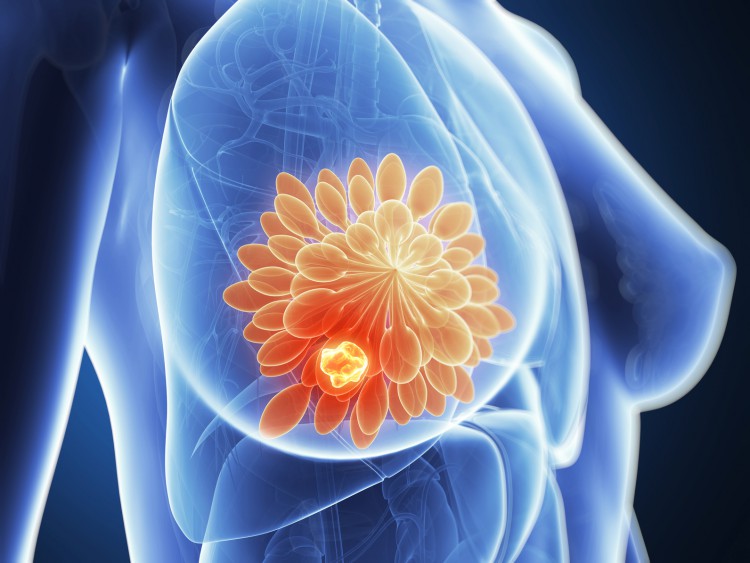
Benign neoplasms(cyst, lipoma, fibroadenoma) are characterized by the appearance of an elastic ball in the thickness of the tissue, sometimes with a change in skin color over the localization site. The pain is constant and intensifies when pressed.
Malignant tumors rarely accompanied by pain. Among the first signs are the appearance of lumps, changes in the contours of the breast or the shape of the nipple, peeling of the skin, and enlargement of the axillary lymph nodes.
Develops when microorganisms enter tissue. It occurs more often during lactation, but can become a complication of mastopathy with decreased immunity. It occurs with high temperatures (up to 40° C), swelling and redness of the breast.
The cyclical form of pain in the mammary glands is completely normal. To improve the quality of life, several groups of drugs are used:
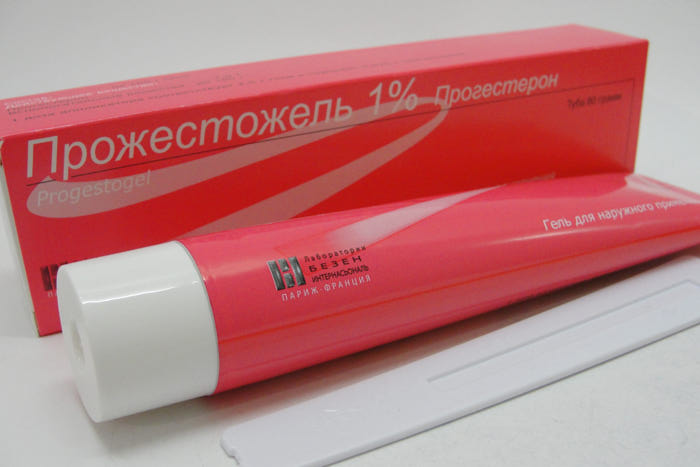
If an infectious inflammation is suspected, it is necessary to act on bacteria to reduce pain. For this purpose, antimicrobial agents and antibiotics are used.
Traditional medicine recipes complement pain relief therapy. When the chest hurts, compresses, infusions, and homemade herbal tea are used.
. In spring or early summer, dig up the plant by the roots, wash it, and clean the underground parts. Squeeze out the juice and filter through cheesecloth. Mix with sugar 1:1, dilute with alcohol in the amount of 0.1 part of the volume of juice. Leave in the refrigerator for 3 days. Take 1 tablespoon 3 times a day. For a compress, use fresh burdock leaves, which are fixed on the chest while sleeping at night. A cloth napkin is soaked in an infusion of burdock leaves and roots and kept until completely dry. To prepare it, the plant is crushed, placed in an enamel bowl and poured with boiling water. After cooling, use once.
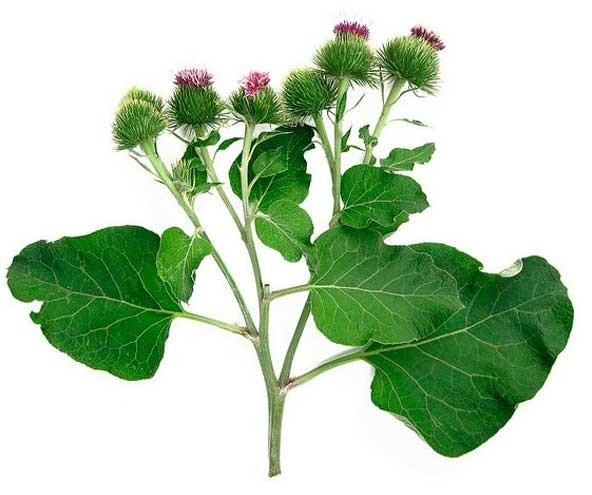

Beet. Take 2 medium-sized root vegetables, grate them, add a tablespoon of 9% vinegar. Stir and heat the mixture slightly in a water bath or in the microwave. Apply to the mammary glands, wrap with film, and on top with a flannel diaper. Keep for no more than 8 hours. can be used internally. It removes toxins and activates the lymphatic and immune systems. After preparing the juice, keep it in a cool place for 3 hours and filter. Take starting with 1 tablespoon in the morning, gradually increasing the dose to half a glass. To improve the taste of the drink, mix with any other juice or dilute with water.
Herb tea. You can buy a ready-made collection of medicinal herbs or prepare it yourself. Take equal parts of nettle, calendula flowers, boron uterus, and rose hips. Pour 1 tablespoon of the mixture with a glass of boiling water and let it brew. Drink warm 3-4 times a day, you can add honey for taste.
During puberty, discomfort associated with the growth of the mammary glands can be corrected without the use of drugs.
Wearing a bra and exercising will help relieve tension in the pectoral muscles. Compliance with the principles of a healthy lifestyle (daily routine, proper nutrition) promotes the formation of hormonal levels and the normal functioning of the entire reproductive system.
It is necessary to exclude exposure to ultraviolet radiation on the skin of the breast, adhere to the rules of hygiene, and avoid diaper rash in the hot season. Hypothermia is also unacceptable.
As a result of irregular sexual activity, the balance of sex hormones in a woman’s body can be disrupted. Prolonged use leads to an increased level of estrogen, which retains fluid and therefore increases swelling of the mammary glands.
In addition, the absence of a permanent sexual partner affects the psycho-emotional state of a woman. She is susceptible to depression, more often than not, which negatively affects the entire endocrine system.
Tight underwear compresses the chest, disrupting blood circulation and lymph flow. When the mammary glands enlarge before the onset of menstruation, the pressure of the bra becomes stronger. In this case, even if a woman usually does not have breast pain in the second phase of the cycle, such a symptom may appear.
It is better to choose underwear from natural fabrics, your size and style that suits the shape of your breasts. The bra should not leave marks after wearing or dig into the skin. Underwire models are not intended for daily use.
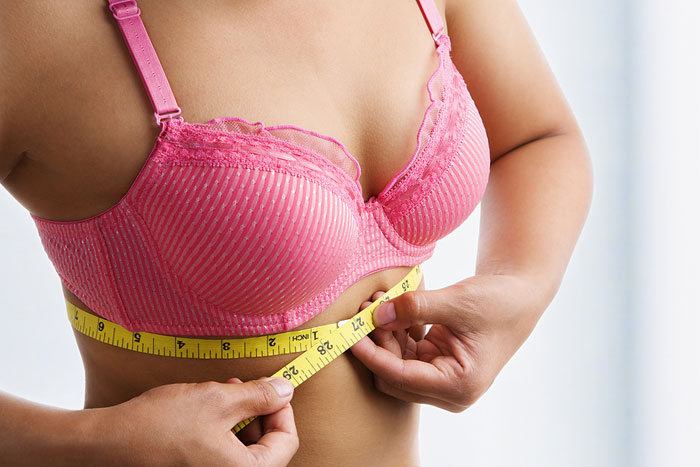
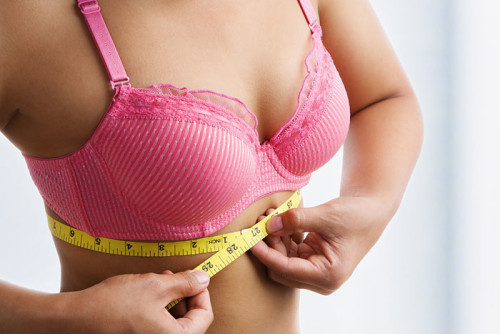
The cups can fit tightly around the chest, but do not squeeze it. The straps are chosen to be wide enough to evenly distribute the weight of the chest. The clasp at the back should not ride up.
To keep your breasts healthy, you should wear a bra no more than 12 hours a day.
Estrogen synthesis occurs with the participation of cholesterol, so consumption large quantity Fatty foods provoke hormonal imbalance and, as a result, pain in the mammary glands. Baking and sweets contribute to the appearance, which also leads to an increase in estrogen production.
Abuse of salt leads to fluid retention, swelling, and a feeling of fullness in the chest. Coffee, strong tea, and dark chocolate contain methylxanthines, which increase pain.
All types of canned food, unnatural products containing dyes have a negative effect on the endocrine glands, and therefore are also subject to prohibition.
To maintain the health of the reproductive system, you should enrich your diet with the following products:
Pain is always a signal from the body about disturbances or the threat of their possible occurrence. Therefore, when breasts hurt, a woman should think about her health.
The appearance of discomfort against the background of physiological changes associated with the menstrual cycle is considered normal, but can develop into serious hormonal dysfunction. In such cases, it is enough to reconsider your lifestyle and change your diet to avoid illness in the future.
Breast pathologies are diagnosed in 70% of women of reproductive age. Modern medicine can completely get rid of most of them. It is important not to miss the onset of the disease and start treatment in the early stages.